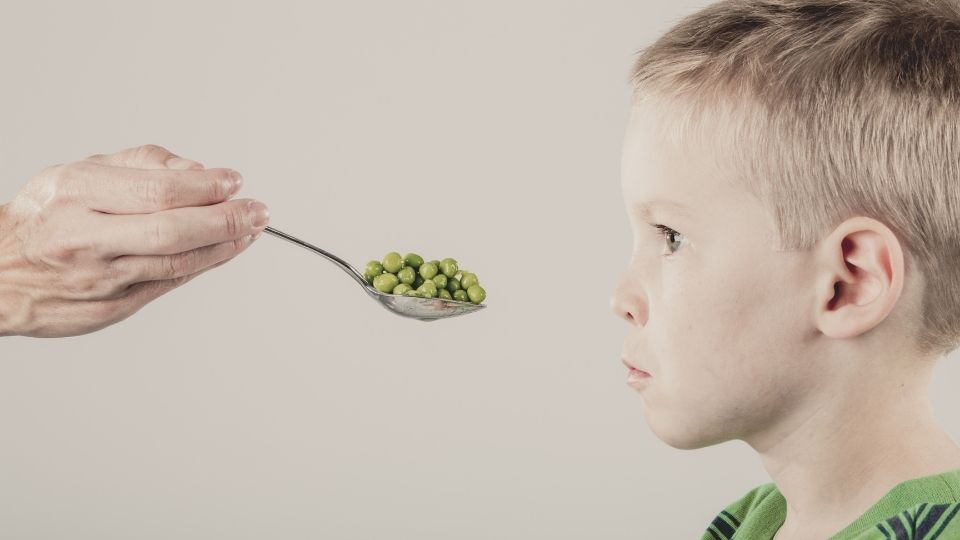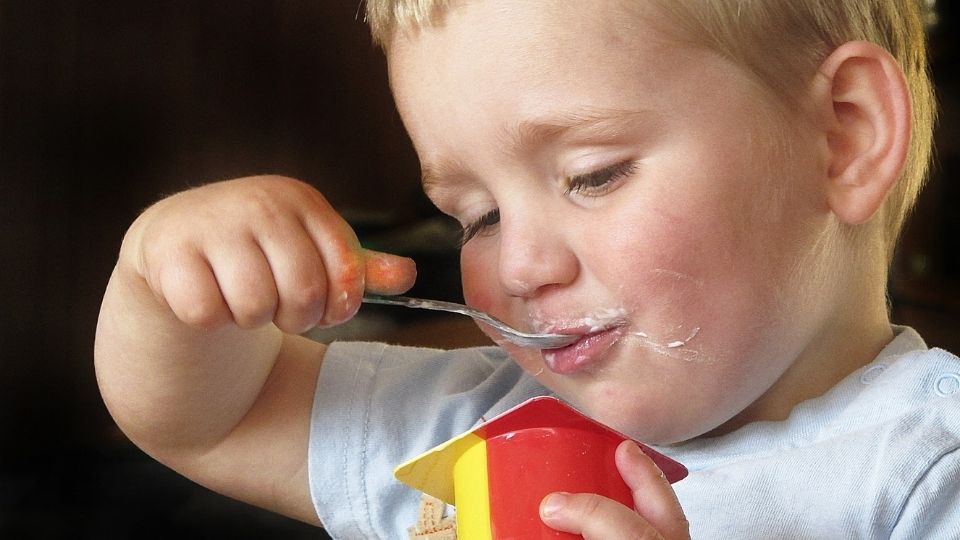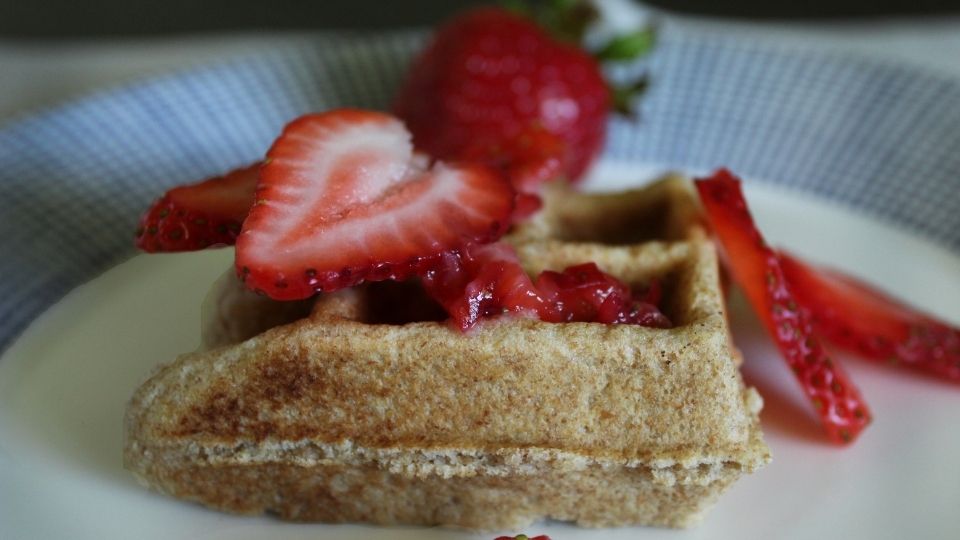Helpful Hints for Parents of Picky Eaters

Having a child who is a picky eater can make snacks and mealtimes very stressful for parents and the rest of the family. If you have a picky eater in the family, you’re not alone. In this fact sheet we offer helpful hints to reduce picky eating and make mealtime enjoyable and fun for the whole family.
Keep in mind, picky eating can look different in every child. Your child is considered a picky eater if he or she demonstrates one or more of the following behaviors:
- Is unwilling to try new foods
- Only eats a limited number of foods
- Does not eat foods from certain food groups
- Avoids certain textures of foods
- Has strong food likes/dislikes
If this sounds like your child, there are many ways you can influence their eating patterns and make mealtimes more enjoyable. Here are some things to consider:

- Children’s appetites change frequently between one to five years of age. It’s natural for a child’s appetite to increase or decrease as their growth patterns
fluctuate. If they go through periods of time when they are eating less than usual, its likely because they aren’t as hungry and therefore don’t need as much food to feel satisfied. - Children are naturally very intuitive eaters. Unlike most adults, they eat based on hunger and fullness. When a child expresses they are full, trust them. They likely are comfortably full and have had enough to eat for that meal.
- Children like to express their independence by having a say in what and how much they eat. When children feel like they have choices in regards to food and meals, they are less likely to be picky with food and more likely to eat a well balanced diet.
- Exposure to a wide variety of foods is important starting during pregnancy and infancy. Numerous studies have found that infants who are exposed to a variety of foods and flavors through breastmilk are less picky and more likely to try new foods.
The food environment has a lot to do with a child’s interest in and willingness to try new foods. Your attitude and behaviors during mealtimes are very influential on your child’s eating behaviors (van der Horst, 2012). Instead of using pressure, restriction, or other controlling practices with your child as a way to get them to eat, remain positive, supportive, and patient during mealtimes (van der Horst, 2012).

It is your responsibility to offer a wide variety of foods that are prepared and presented in a way that is nutritious and appropriate for your child’s age and development (Satter, 1987). Your child, on the other hand, is responsible for how much she or he eats (Satter, 1987). If you make foods available, expose your child to a wide variety of foods, and model enjoyment when eating, your child is much more likely to try new foods, eat a greater variety of foods, and enjoy mealtimes (Dovey, Staples, Gibson, & Halford, 2008; Satter,1987; van der Horst, 2012). Keep in mind, it may take up to 15 different attempts for your child to finally accept new foods, especially fruit and vegetables (Maier, Chabanet, Scaal, Issanchou, &Leathwood, 2007). Continue offering the food item even if it appears right away that your child doesn't like it. If you would like more ideas on how to increase your child’s vegetable intake see our fact sheet on “Helping Your Children Love Vegetables.”
Figure 1 provides a brief overview of some tips and tricks to help create an eating environment that will improve your child’s relationship with food and therefore reduce their pickiness with food and mealtimes (Galloway, Fiorito, Lee, & Birch, 2008; Kerzner, 2009; Pérez-Escamilla Segura-Pérez, & Lott 2017; Satter, 1995). In addition, these tips can make mealtime more fun and enjoyable for the whole family.
Figure 1. Easy Ways to Improve the Eating Environment and Reduce Picky Eating.
Involvement
- Have your child help prepare meals and snacks
- Let your child help pick out produce at the grocery store
- Grow food at home and allow your child to help with planting, watering, and harvesting
- Involve your child in menu planning to ensure there are foods on the menu he/she enjoys.
Fun
- Use cookie cutters to make fun shapes of fruits or vegetables.
- Have a variety of dips or sauces for dunking.
- Talk about the smell, texture, and appearance of new fruit and vegetables.
Eliminate Distractions
- Turn off or remove electronic devices from the dining area.
- Leave toys and books in a different room.
- Be actively involved and engaged during meal times.
Meal Time
- Regularly schedule meals and snacks.
- Be a role model at meals by eating the various foods served.
- Avoid pressuring children to eat certain foods.
- Keep competive foods out of sight.
- Don't become a short order cook. Make one meal for everyone.
- Incorporate a side dish in every meal that your child enjoys.
As previously mentioned, there are a wide variety of strategies to reduce picky eating behaviors in children. There are also many strategies that are known to make picky eating worse including:
- Micromanaging what and how much your child eats.
- Bribing, pressuring, and begging children to eat nutritious foods.
- Making mealtimes stressful for your child.
- Making negative comments about your weight, body image, and/or food choices.
- Expressing dislike of certain nutritious foods or food groups.
In most circumstances, picky eating is not caused by any other health or feeding related issue nor does it cause problems with growth or development (Wright, Parkinson, Shipton, & Drewett, 2007). Typically when parents utilize strategies discussed in this fact sheet, their child will slowly reduce picky eating behaviors and learn to enjoy foods and mealtimes. Creating a positive eating environment for children that is free of pressuring, supports a child’s ability to continue to listen to internal cues for eating setting them up for healthier eating patterns down the road (Satter, 1995). In rare circumstances, picky eating can be caused by a more severe health or feeding related issue (Lam, 2015). If your child’s picky eating persists for a long period of time or appears to be impacting growth and development, discuss your concerns and observations with your pediatrician.
References
- Dovey, T. M., Staples, P. A., Gibson, E. L., & Halford, J. C. (2008). Food neophobia and ‘picky/fussy’ eating in children: A review. Appetite, 50(2-3), 181-193. doi:10.1016/j.appet.2007.09.009
- Gaylloway, A., Fiorito, L., Lee, Y., & Birch, L. (2008) Parental pressure, dietary patterns, and weight status among girls who are “picky eaters.” Journal of the American Dietetic Association, 105(4), 541-548. 10.1016/j.jada.2005.01.029.
- Kerzner, B. (2009). Clinical investigation of feeding difficulties in young children: A practical approach. Clinical Pediatrics, 48(9), 960- 965.
- Lam, J. (2015). Picky eating in children. Frontiers of Pediatrics, 2(41). doi: 10.3389/fped.2015.00041
- Leung, A., Marchand, V., & Sauve, R. (2012). The ‘picky eater’: The toddler or preeschooler who does not eat. Paediatric Child Health, 12(8), 455-460.
- Maier, A., Chabanet, C., Schaal, B., Issanchou, S., & Leathwood, P. (2007). Effects of repeated exposure on acceptance of initially disliked vegetables in 7-month old infants. Food Quality & Preference, 18(8), 1023-1032. doi:10.1016/j.foodqual.2007.04.005
- Pérez-Escamilla, R., Segura-Pérez, S., & Lott, M. (2017). Feeding guidelines for fnfants and young toddlers: A responsive parenting approach. Guidelines for health professionals. Healthy Eating Research. Retrieved from http://healthyeatingresearch.org/wpcontent/uploads/2017/02/her_feeding_guidelines_report_021416- 1.pdf
- Satter, E. (1987). How to get your kid to eat…but not too much. Boulder, Colorado: Bull Publishing Company.
- Satter, E. (1995). Feeding dynamics: helping children to eat well. Journal of pediatric health care, 9(4), 178-184.
- Smith, A. M., Roux, S., Naidoo, N., & Venter, D. (2005). Food choices of tactile defensive children. Nutrition, 21(1), 14-19. doi:10.1016/j.nut.2004.09.004
- Taylor, C.M., Wernimont, S.M., Northstone, K., & Emmett, P.M. (2015) Picky/fussy eating in children: review of definitions, assessment, prevalence and dietary intakes. Appetite. 95(1), 349- 359. https://doi.org/10.1016/j.appet.2015.07.026.
- van der Horst, K. (2012). Overcoming picky eating. Eating enjoyment as a central aspect of children’s eating behaviors. Appetite, 58(2), 567-574. doi:10.1016/j.appet.2011.12.019
- Wright, C., & Parkinson, K., Shipton, D., & Drewett, R. (2007). How do toddler eating problems relate to their eating behavior, food preferences and growth? Pediatrics, 120(4). doi: 10.1542/peds.2006-2961
Authors
Chelsea Feller Dietetics Student; Mateja R. Savoie Roskos PhD, MPH, RD; Carrie Durward PhD, RD
Related Nutrition Articles







